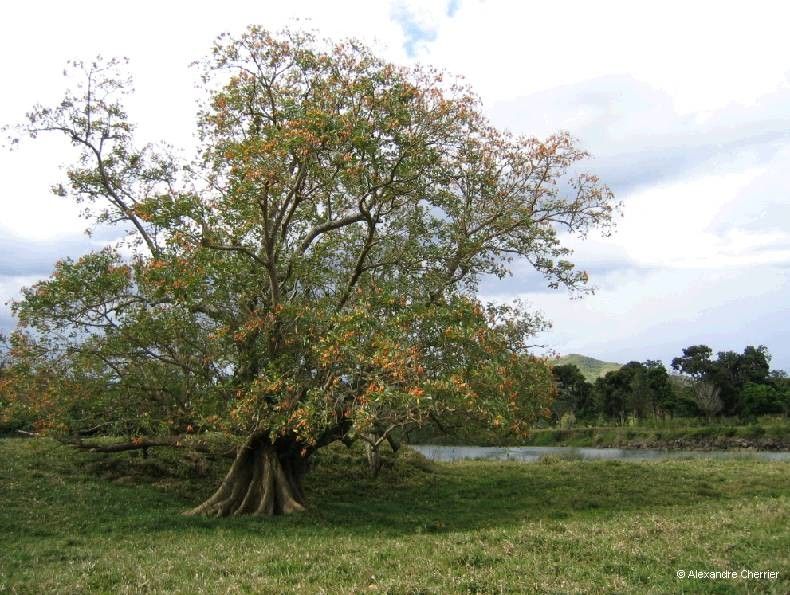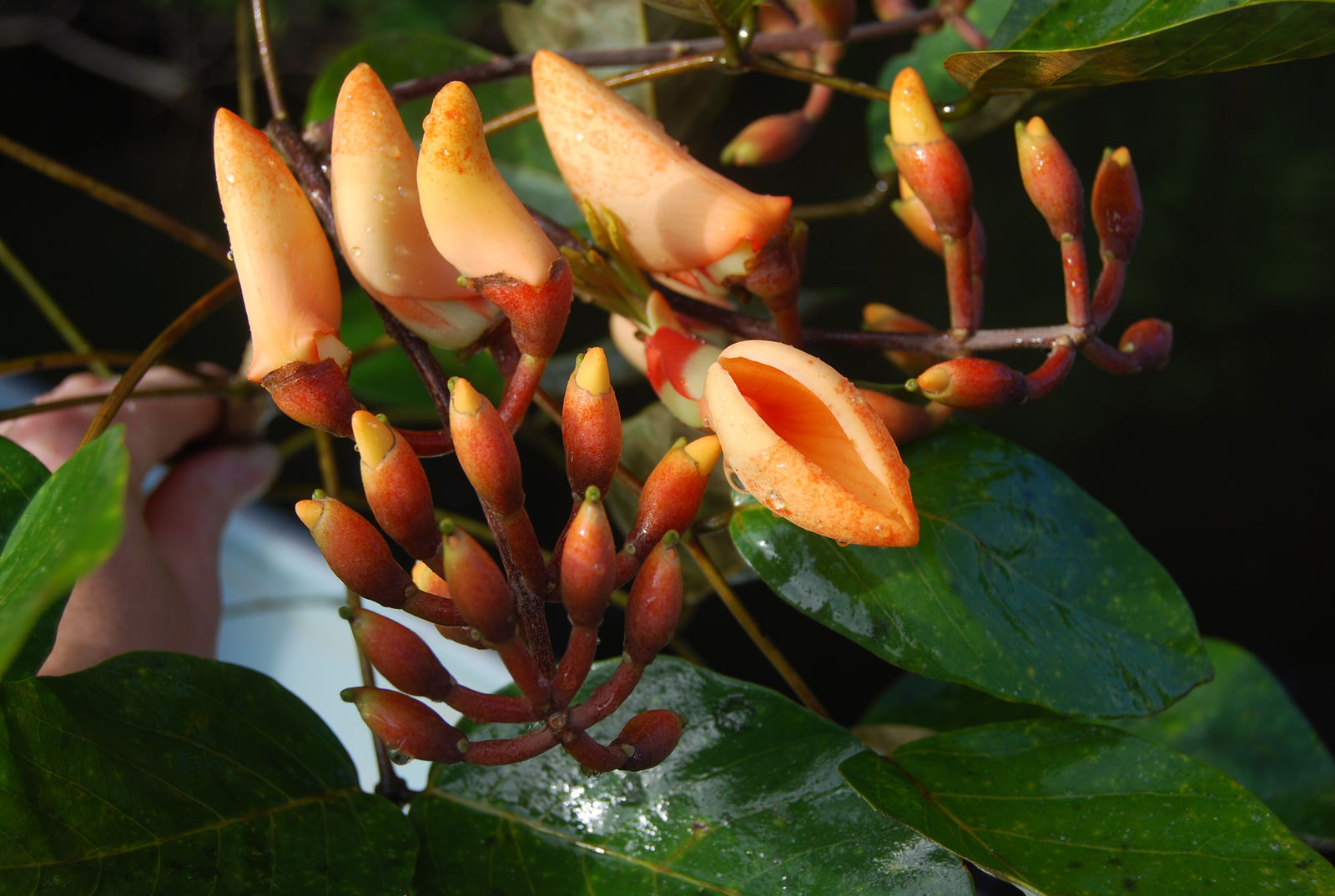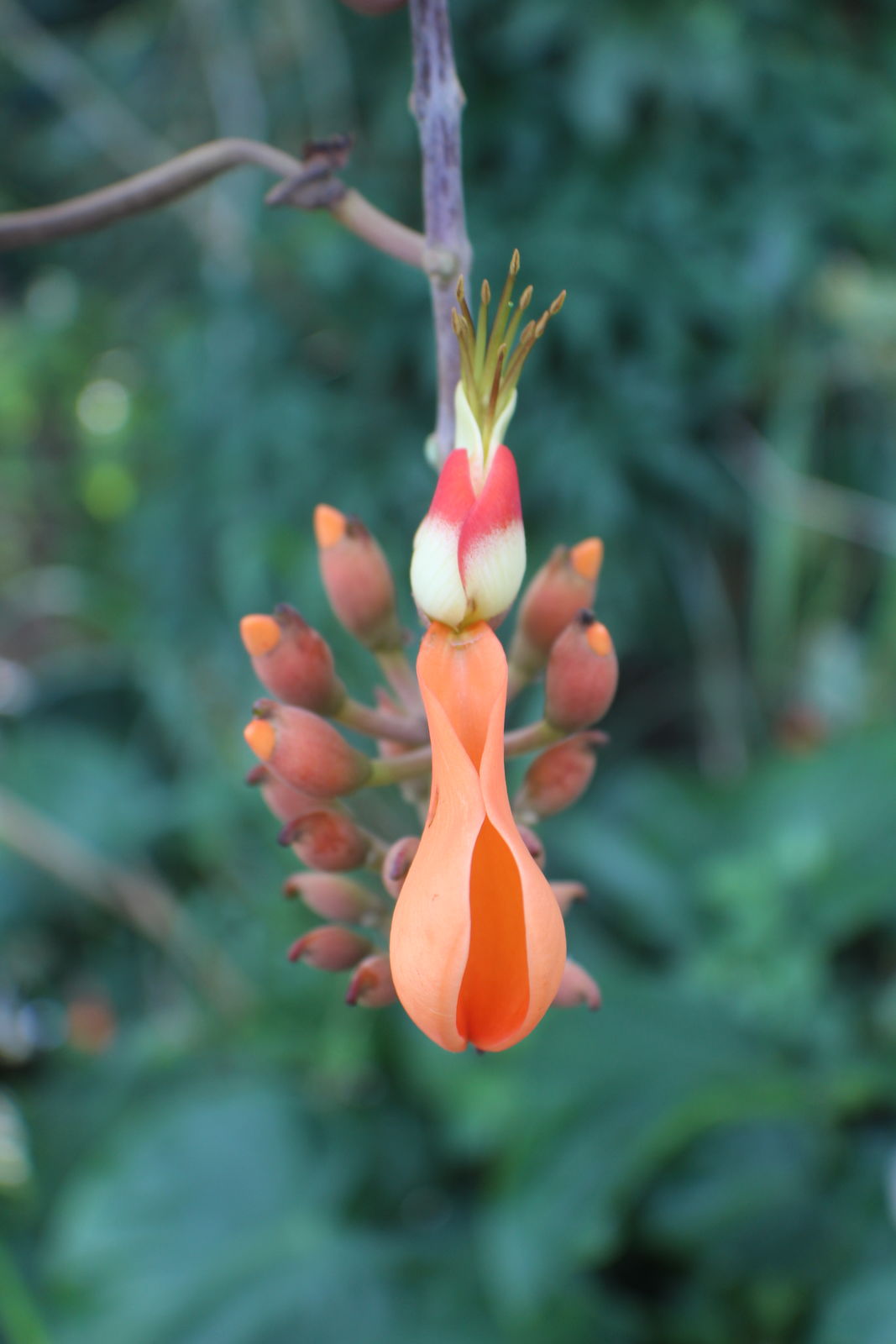Orange Coral Tree, Cowhorn Coral Tree
erythrina fusca
Also known as: ["Orange Flame Tree","Purple Coral Tree"]
Overview
A deciduous tree native to tropical regions, known for its vibrant orange-red flowers and spiny stems.
Benefits & Perks
["long-flowering","wildlife attractant (bees, butterflies, birds)","drought tolerant"]
Botanical Classification
| Phylum: | Magnoliophyta |
| Class: | Magnoliopsida |
| Order: | Fabales |
| Family: | Fabaceae |
| Genus: | Erythrina |
| Botanical Name: | Erythrina fusca |
Plant Characteristics
Basic Information
- Category: Trees
- Suitable Location: outdoor garden in tropical or subtropical regions
- Suitable For:
- Is Weed: No
- Allergenicity: low
Environmental Needs
- Climate: {"temperatureRange":"15–35°C"}
- Hardiness: {"zones":"9–11"}
- Misting: rarely required, only if ambient humidity is very low
- Drainage: Fast-draining to prevent waterlogging.
- Soil Type: Well-draining, loamy soil with organic matter.
Maintenance Level
- Maintenance Level: moderate
- Toughness Level: high
- Pruning Frequency: Annually in late winter or early spring.
- Pruning Intensity: Moderate to heavy, depending on desired shape.
Care Details
Ideal Sunlight Coverage:
Full sun (6–8 hours/day); tolerates partial shade in intense heat.
Sunlight Tolerance Tips:
Acclimate gradually to full sun; protect from harsh afternoon sun in hot climates; ensure bright light indoors.
Care Requirements
Care Difficulty
moderatemoderate
Sunlight
full sun to partial shade
Use shade cloth in extreme heat; rotate plant for even light exposure; avoid direct indoor light if acclimating.
Watering
every 7–10 days during active growth, reduce in winter
Water thoroughly but infrequently; ensure good drainage; avoid waterlogging.
Soil
well-draining, loamy soil with moderate organic content
pH: Slightly acidic to neutral (pH 6.0–7.0).
Ensure soil is not compacted; avoid heavy clay; amend with organic matter.
Temperature
Thrives in 65–85°F (18–29°C); prefers warm, tropical conditions.
Avoid sudden temperature changes; protect from frost; ensure good air circulation.
Fertilizing
every 4–6 weeks during growing season
Dilute fertilizer to half strength; avoid over-fertilizing; fertilize after watering.
Propagation
Methods
Stem cuttings or seeds.
Step-by-Step Propagation Guide
- Take cutting.
- Apply hormone.
- Plant in medium.
- Maintain humidity.
- Wait for roots.
Best Time: Spring or early summer when growth is active.
Environment
High humidity (70–80%), warm (75–85°F), partial shade.
Medium
Well-draining mix of perlite and peat moss.
Hormone
Rooting hormone recommended for faster rooting.
Timeline
Roots in 4–6 weeks; establish in 3–6 months.
Tools Needed
Pruners, rooting hormone, propagation tray, humidity dome.
Quick Tips
Use healthy, non-flowering stems; maintain consistent moisture; provide bottom heat for faster rooting.
Pruning & Repotting
Pruning Guide
Method
Selective cutting of branches; avoid topping.
Pruning Plan
Shape plant, remove dead/diseased wood, encourage bushier growth.
Tools
Pruning shears, loppers, gloves.
Checklist
Sterilize tools; prune dead/diseased wood; shape evenly; avoid over-pruning.
Repotting Guide
Best Season
Spring before new growth begins.
Pot Size
One size larger pot; ensure drainage holes.
Method
Remove plant; trim roots if needed; repot in fresh soil with good drainage.
Suggestions
Repot every 2–3 years or when roots fill the pot.
Checklist
Check root bound status; prepare new pot; trim roots; use fresh soil.
Advanced Care Tips
Watering Mastery
Watering Checklist
Check soil moisture; water deeply; ensure drainage; avoid overhead watering.
How to Apply Water Properly
Water at the root zone until water drains from the bottom; avoid wetting foliage; water in the morning to reduce evaporation.
Watering Schedule Tips
Water deeply once the top inch of soil is dry; reduce frequency in winter to prevent root rot.
Soil Improvement
Add perlite or sand for drainage; incorporate compost for fertility.
Temperature Stress Management
Signs of Temperature Issues
Leaf drop, stunted growth, or chlorosis in cold; wilting or scorching in excessive heat.
Cold Stress
Leaves may drop; growth slows; roots can rot in cold, wet soil.
Solution: Move to a warmer location; protect from frost; reduce watering in cold.
Hot Stress
Leaves may scorch, wilt, or drop; growth may slow.
Solution: Provide shade during peak heat; increase watering; mist foliage in extreme heat.
Fertilizing Guide
Fertilizing Checklist
Check fertilizer type; dilute properly; apply during growing season; avoid winter.
Fertilizing Method
Use balanced liquid fertilizer every 4–6 weeks during growing season; reduce or stop in winter.
Common Problems & Solutions
Toxicity Warning
Cats
ToxicErythrina fusca is toxic to cats, with the seeds, flowers, and bark containing alkaloids that can cause severe gastrointestinal and neurological distress. Cats are particularly sensitive to these compounds, and ingestion can be life-threatening.
⚠️ Symptoms:
🌿 Toxic Parts:
⚡ Toxic If:
if eaten
Dogs
ToxicThe seeds, flowers, and bark of Erythrina fusca are toxic to dogs due to the presence of toxic alkaloids. Ingestion can lead to severe gastrointestinal and neurological symptoms, potentially resulting in fatal outcomes if untreated.
⚠️ Symptoms:
🌿 Toxic Parts:
⚡ Toxic If:
if eaten
Humans
ToxicErythrina fusca contains toxic alkaloids, particularly in its seeds, which can cause severe physiological effects upon ingestion. The alkaloids interfere with the nervous system and can lead to paralysis or respiratory failure in severe cases.
⚠️ Symptoms:
🌿 Toxic Parts:
⚡ Toxic If:
if eaten
Frequently Asked Questions
Q: Is Erythrina fusca toxic to pets?
A: Yes, it is toxic to dogs and cats.
Q: Does this plant attract wildlife?
A: Yes, it attracts bees, butterflies, and birds.
Q: How difficult is it to care for?
A: It requires moderate care and maintenance.
Quick Reference
| Family: | Fabaceae |
| Care: | moderate |
| Light: | full sun to partial shade |
| Water: | every 7–10 days during activ |
Get Expert Care Tips
Download the Plantious app for personalized care reminders and plant identification!
Google Play App Store








